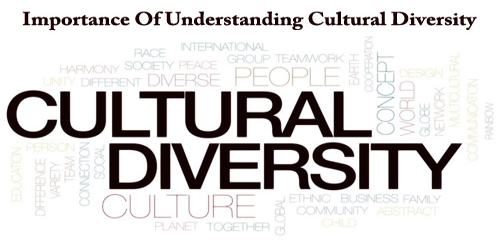The term “culturally diverse” is often used interchangeably with the concept of “multiculturalism.” Valuing and understanding cultural diversity is an important step in being able to understand the customs and histories of a society. Culture itself is a key feature in a society’s identity as it enables people within the society to identify how they view themselves and other groups in which they identify with. Every culture, community, or ethnic group tends to have its own beliefs, values, and notions of how to lead one’s life.
Every society relies on cultural expression in order to continue to keep its communities strong and its traditions alive. The key component of cultural expression is language. Language is essential as a social element and helps to establish emotional feelings of solidarity and group identity. Denying a people this particular fundamental aspect of cultural expression limits the unique perspectives of those people’s lives and the transmission of knowledge from one generation to the next is immediately endangered. Language is what holds cultures together and binds people to each other. The loss of a language means an entire culture, its people, its identity are forever lost. The suppression of languages of minority groups, in general, has been used as a political policy throughout history in order to exterminate and suppress minority cultures. When languages disappear cultures die and dead cultures are soon lost to in the history of time.
Sociologist Dr. Caleb Rosado, who specializes in diversity and multiculturalism, described seven important actions involved in the definition of multiculturalism:
- recognition of the abundant diversity of cultures;
- respect for the differences;
- acknowledging the validity of different cultural expressions and contributions;
- valuing what other cultures offer;
- encouraging the contribution of diverse groups;
- empowering people to strengthen themselves and others to achieve their maximum potential by being critical of their own biases; and
- celebrating rather than just tolerating the differences in order to bring about unity through diversity.
Culture is the lens with which we evaluate everything around us; we evaluate what is proper or improper, normal or abnormal, through our culture. If we are immersed in a culture that is unlike our own we may experience culture shock and become disoriented when we come into contact with a fundamentally different culture. People naturally use their own culture as the standard to judge other cultures; however, the passing judgment could reach a level where people begin to discriminate against others whose “ways of being” are different than their own essentially, we tend to fear that which we do not understand.
Recognizing and understanding cultural differences in the workplace is just the beginning. Subordinate group’s opinions that have developed over time may cause defensive and cautious behaviors and attempting to bridge the gap between dominant and subordinate groups could provide better communication. Managers and supervisors need to strive for a deeper knowledge and understanding of cultural differences. By establishing relationships at work with individuals different from our self, we can begin to learn the knowledge that culture may have to offer our organization.
Prejudice and prejudgment also need to be addressed including the misconceptions based on cultural values or stereotypes. For example, it may be thought that men work harder at their jobs and are more committed than women, or that younger employees have no motivation to work, or even that a Jamaican employee is lazy because of his/her laid back culture. A manager can become a role model for all employees to embrace cultural diversity in the workplace by confronting these prejudgments. “Managing diversity is a comprehensive managerial process for developing an environment that works for all employees.”
Cultural diversity is important because our country, workplaces, and schools increasingly consist of various cultural, racial, and ethnic groups. We can learn from one another, but first, we must have a level of understanding about each other. Learning about other cultures helps us understand different perspectives within the world in which we live. It helps dispel negative stereotypes and personal biases about different groups.
In addition, cultural diversity helps us recognize and respect “ways of being” that are not necessarily our own. So that as we interact with others we can build bridges to trust, respect, and understanding across cultures. Furthermore, this diversity makes our country a more interesting place to live in. As people from diverse cultures contribute language skills, new ways of thinking, new knowledge, and different experiences.
Cultural diversity supports the idea that every person can make a unique and positive contribution to the larger society because of, rather than in spite of, their differences. Imagine a place where diversity is recognized and respected; various cultural ideas are acknowledged and valued; contributions from all groups are encouraged; people are empowered to achieve their full potential, and differences are celebrated.
Information Sources:
















